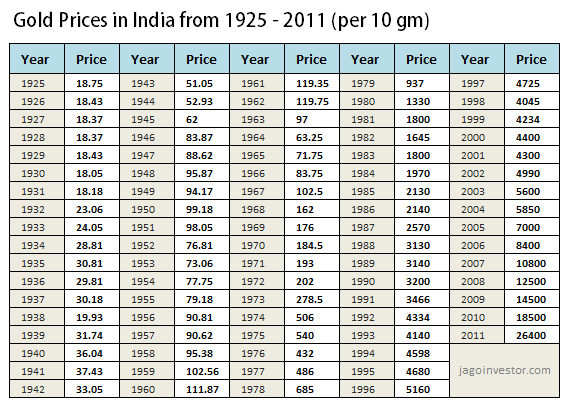Contents
This means that goodwill of a partnership firm is an internally self generated goodwill, that is, the firm itself evaluates the value of its goodwill. Under this method, first of all the capitalised value of the business is calculated. This value is calculated by capitalizing the average profit on the basis of the normal rate of return of a business. To calculate the value goodwill of the firm the actual capital employed of a firm is deducted from the value of the business so calculated. Under this method, goodwill is calculated on the basis of excess profit earned by a firm over the normal profit earned by its counterparts in the same industry. This excess of profit over the normal profit is termed as super profit.
- Thus in case of reconstitution of partnership goodwill cannot be raised in the book as no consideration is paid for it.
- When company ‘A’ is willing to purchase company ‘B’ at a sum greater than ‘B’s tangible assets, goodwill exists.
- When this happens, investors subtract goodwill from their residual equity calculations.
- But, several other aspects comprise goodwill meaning, the details of which are given below.
Both IFRS and GAAP require that difference between fair value of net assets and purchase price be recognised as a gain in the income statement. Accounting Standard 26 specifically states that internally generated goodwill should be immediately written off after it has been raised. Accounting Standard 26 states that, goodwill has to be adjusted as per partner’s capital account. Goodwill is computed by deducting the difference between the fair market value of the assets and liabilities from the company’s acquisition price.
Everything You Need to Know About Operating Cost Formula
Credit side, then the final capital balance of the partners is shown as ‘Balance c/d’ on the Credit side. Similarly, any income that is received in advance is shown on the Debit side and Prepaid expenses (i.e. expenses incurred in advance) are recorded on the Credit side of the Revaluation Account. Then, Outstanding expenses of the firm are recorded on the Debit side and Prepaid expenses are recorded on the Credit side of the Revaluation Account. The following formula is used to ascertain the value of the firm’s goodwill.

Goodwill is the worth of a company’s reputation earned through time in terms of predicted future earnings over and above typical profits. In comparison to a freshly created business, a well-established firm gains a strong reputation in the market, builds client trust, and has more commercial contacts. When a business buys another, it buys its fixed assets, such as property, plant, and equipment, as well as its intangible assets. If Pepsi sought to buy Coca-Cola, for example, Coca-worth Cola’s goes beyond the value of its manufacturing sites, equipment, and bottling firms. The difference between the actual purchase price paid to buy the target firm and the Net Book Value of the company’s assets is the Excess Purchase Price .
Various cases for treatment of the goodwill
The below-mentioned methods are used for the valuation of the goodwill of a firm. Since the value of internally generated goodwill cannot be traced back to a cost source hence its accurate and reliable value is very difficult to determine. As mentioned above, it arises out of the efforts of a firm over the years and hence is internally generated. The following are the important factors that affect the goodwill of a firm. You can enter a word by copy & post, drag & drop, or by typing in the search box above to get the meanings of goodwill account. Goodwill is an attractive force, which attracts more number of customers to old place of business.
Due to the reputation of a firm its sales volume increases and as a result the amount of profit also increases. Thus, Goodwill is the attractive force which brings in customers and increases profitability. For many investors, assessing goodwill is a difficult but necessary skill. After all, it might be difficult to establish whether a company’s claimed goodwill is justified when looking at its balance sheet. For example, a corporation may claim that its goodwill is based on the acquired company’s brand awareness and customer loyalty. Investors will investigate what is underlying a company’s declared goodwill when looking at its balance sheet to see if that goodwill will need to be wiped down in the future.
It can also be defined as the difference between total assets and external liabilities of a firm. The Institute of Chartered Accountants of India has defined it as ‘an intangible asset arising from business connections or trade name or reputation of an enterprise’. It arises in a business firm from its business relations, good name, the good impression created upon the customers, suitable location, etc.

The sum that the purchasing firm charges to the target business over the book value of the target typically accounts for the goodwill of the client. As per AS-26 only purchased goodwill to be recorded in the books of accounts. Raising of goodwill is a process by which the value of goodwill of the entity is brought into or recorded into the book of account at the fair value as on that date.
Fundamental Accounting
With the passage of time, their values in the books may differ from their current values. Therefore, at the time of admission of a new partner, it is desirable to ascertain the true current value of all the assets and liabilities. There may also be a situation when some assets or liabilities of a firm are not recorded in the books of account.
This is the company’s reputation of the company in the market and their ability to serve customers. That is the goodwill created from the collective operations of the business through its assets. The reputation of a firm to hold its customers and to attract more and more customers is called « goodwill ».
The S-4 filing revealed that as of March 31, 2018, the deal was valued at $35.85 billion. The Financial Accounting Standards Board , which develops GAAP regulations, is contemplating changing the way goodwill impairment is assessed. Two types of goodwill are commonly found in the world of business.
To calculate goodwill in a simplified manner, take a company’s purchase price and subtract the net fair market value of known assets and liabilities. A firm earn its profits from the capital employed in the business. I.e. sum total of share capital and reserves and surplus (i.e. undistributed profits).
Number of years’ of purchase implies the number of years for which the firm expects to earn the same amount of profits. Goodwill can be written off only to the extent of capital reserve (i.e. Purchase price paid to acquire is less than assets valued) arising during Amalgamation.. In this case, goodwill is shown as an income on the buyer’s balance sheet. This includes the existing assets in the business such as the employees and equipment that can be used in the day to day operations of the business.
An often overlooked but important benefit of goodwill is that it attracts human resources. People are more eager to work with and for a company that has goodwill. Companies with a good reputation in the market attract better human resources. After you’ve computed all of the aforementioned numbers, subtract the Fair Value Adjustments from the Excess Purchase Price. When the deal closes, the resultant sum is the Goodwill that will be recorded on the acquirer’s balance sheet. See’s Candies, established in California, is an example of this, according to Warren Buffett.
It takes time for a firm to become well established and earn a name for itself. All these ultimately create a reputation in the market giving an edge to the firm over its competitors. This is called goodwill which facilitates to attract and retain more customers resulting more sales and more income. Thus, like other assets, goodwill also facilitates to earn income, hence it is regarded as an asset. Since this asset is not visible, it is called an intangible asset.
The term ‘goodwill’ has been defined in different words by different authors. According to Lord Eldon, » Goodwill is the probability that the old customers will resort to the old place. » Many sources of goodwill are the importance of a company’s brand identity, a stable client base, good customer relationships, good employee relationships, and advanced technologies. The equity of the firm being acquired is ignored on the balance sheet of the combined entity. A classic example of the nature of goodwill and how it affects businesses was observed in 2018 when the US telecom giant T-Mobile acquired Sprint. With the new entity to be named ‘New T-Mobile’ the deal was cleared only in late 2020 after regulatory wrangling.
Adjustment of Accumulated Profits and Losses
Goodwill is subjective and can be a different value for each company. When Facebook acquired Instagram, many people believed that Instagram was not worth more than $500 million. But after valuing Instagram’s total assets, liabilities and goodwill, Facebook believed that Instagram goodwill account is a was worth over $1 billion which is what they paid for it. Goodwill is a premium charged above market value during a sale, which can not be individually bought or sold. Certain intangible assets meanwhile include the likes of licenses that can be individually purchased or sold.
Goodwill refers to the reputation of a business and is vital to any company in acquiring new customers and retaining existing ones. Moreover, Goodwill represents the true value of a company, that is, its total worth over and above its market value. The goodwill of a company is often valued by financial advisors for the purpose of taxation, litigation or maintaining financial statements. Under this Method Goodwill is calculated by multiplying the super profit by a certain number of years’ purchase as agreed. Super profit is the excess of actual profit over the normal profit.
It is earned as a result of the business’s reputation over a period of time. Inherited goodwill takes time to be generated, but it offers many benefits to the business. Various external factors can have an impact on inherited goodwill. To the credit side of the capital account in the old profit sharing ratio of old partners.
It will also make financial institutions and suppliers more eager to extend credit to the company. When there are many competitors in the market, a company’s goodwill helps it stand out. Despite similarity in other aspects, goodwill makes a company stand out and be preferred. This goodwill can be generated by a better product, better service or any other benefit that enhances customer satisfaction.
Like any other asset, this kind of goodwill is a valuable intangible asset for a firm and hence shall be recorded under the head Assets in the balance sheet of the firm. This goodwill arises when a business https://1investing.in/ is purchased or acquired for reasons like brand image, customers pool, business connections, etc. Usually, the importance of goodwill emerges in an acquisition—when an acquirer purchases a target company.
When there is no goodwill, the customer will be hard to calm down and may publicly post their negative feedback. However, if there is a background of goodwill, the customer would be more likely to overlook and forgive any shortcomings. This may require that the company do something extra or make an exceptional effort to exceed expectations. Goodwill is the monetary worth of an advantage that a buyer is willing to pay for. When a customer pays, he expects to make a lot of money in comparison to the profits made by other companies. Because a 25% return on assets is so high, it’s reasonable to assume that some of the company’s prosperity was owing to the presence of significant goodwill assets.
